Nestled within the lush forests of the Philippines lies a captivating avian species – the Philippine Trogon. With its vibrant plumage and unique vocalizations, this remarkable bird vividly symbolizes the nation’s rich biodiversity.
Beyond its striking appearance, the Philippine Trogon leads a fascinating lifestyle characterized by adaptability and resilience in the face of environmental challenges.
Preferring primary or secondary forests at low to medium elevations, these birds shy away from human disturbance, thriving in their secluded woodland habitats.
While their elusive nature may challenge observers, encountering a Philippine Trogon offers an unforgettable experience for birdwatchers and nature enthusiasts, adding to the allure of the Philippines’ natural wonders.
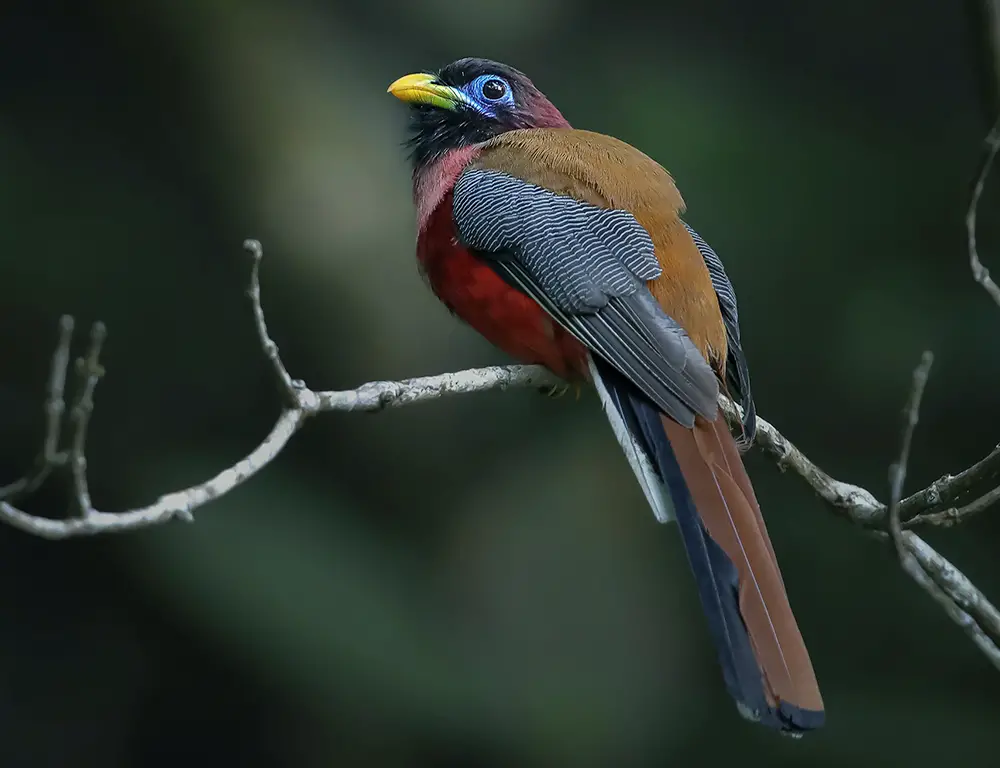
Physical Characteristics of Philippine Trogon
The Philippine Trogon (Harpactes ardens) is a stunning bird species native to the Philippines, known for its distinctive physical characteristics. Here are some key features of its appearance:
Plumage
The plumage of the Philippine Trogon is vibrant and eye-catching. Male trogons sport a mesmerizing mix of blue, red, and white hues. They have crimson underparts, with an upper-body adorned with shades of blue and green.
The tail feathers are tipped with white, creating a striking contrast. Female trogons, while less colorful than males, still boast beautiful brownish-gray and yellow tones.
Size and Shape
Philippine Trogons are moderately sized birds, typically reaching lengths up to 30 centimeters (12 inches). They have compact yet robust bodies designed for life in dense forests.
Broadheads, short necks, and short, square-ended tails characterize their bodies. These features enable them to maneuver effectively through the forest canopy.
Eye Size
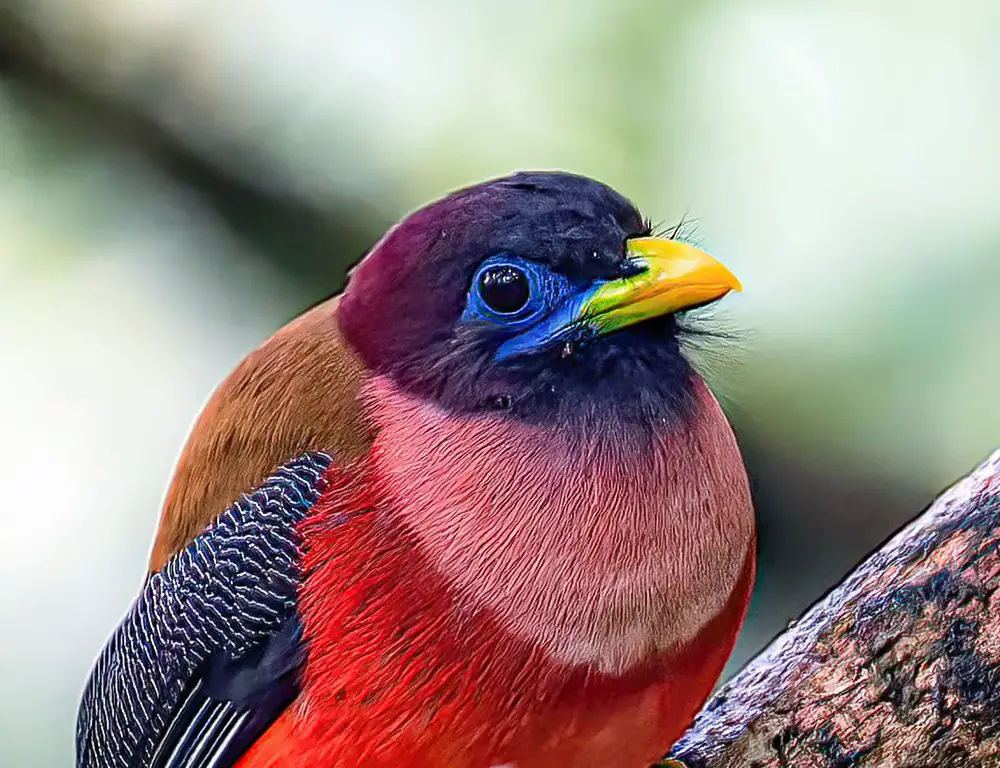
Philippine Trogons have relatively large eyes for their body size. This adaptation provides them with excellent vision, aiding in detecting prey such as insects and fruits. Their large eyes also contribute to their overall alertness and ability to navigate their forest habitat.
Sexual Dimorphism
Like many bird species, male and female Philippine Trogons exhibit sexual dimorphism in their plumage. Males typically display more vibrant and colorful plumage than females, which may help attract mates during the breeding season.
Habitat and Distribution of Philippine Trogon
The Philippine Trogon (Harpactes ardens) is primarily found in the tropical forests of the Philippines, where it is endemic.
Here are some key points regarding its habitat and distribution:
Range
The Philippine Trogon is distributed across various islands of the Philippines archipelago, including Luzon, Mindanao, Samar, and Leyte.
Its presence is notably dominant in regions such as the Sierra Madre mountain range in northeastern Luzon and the Mount Kitanglad range in Mindanao.
Elevation
This species is typically found in habitats ranging from lowland to mid-elevation forests. They can occur at elevations ranging from 300 to about 2000 meters above sea level.
Preferred Habitat
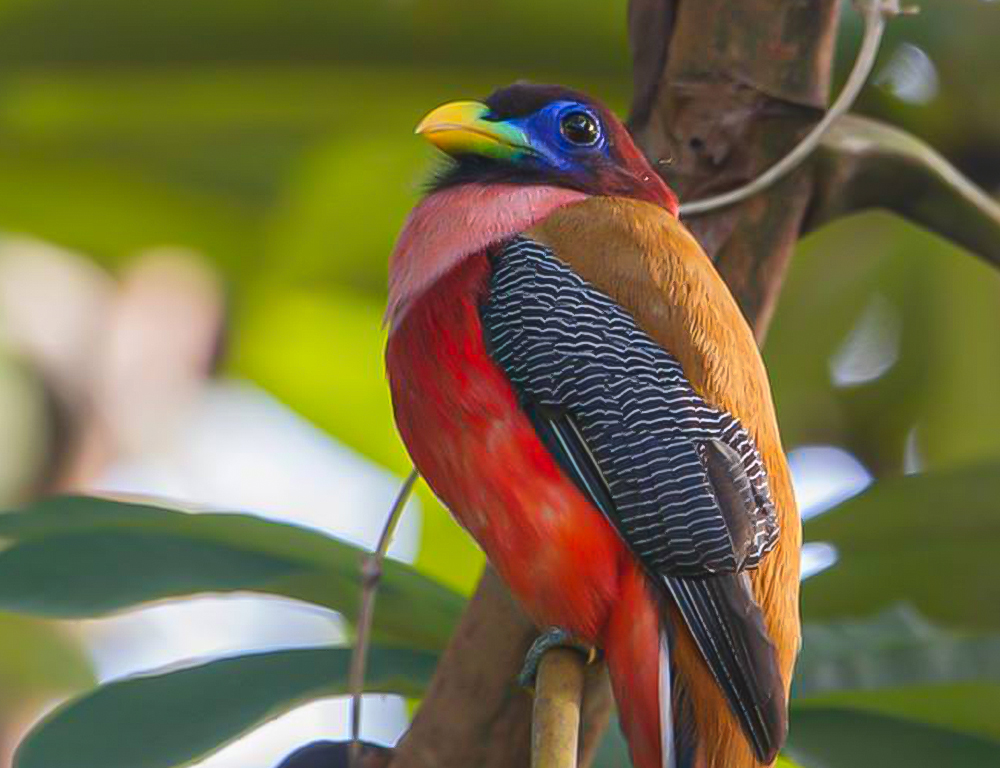
Philippine Trogons favor dense tropical rainforests with lush foliage. These forests provide ample protection against predators and offer abundant insect and fruit resources essential for their survival.
They are often found in primary or secondary forests, preferring areas with minimal human disturbance.
Nesting Sites
When it comes to nesting, Philippine Trogons are cavity nesters. They prefer to nest in tree trunks with softwood, where they can quickly hollow out cavities for their nests.
These nesting sites are typically located at varying ground-level heights, adding to the species’ adaptability.
Behavior of Philippine Trogon
The behavior of the Philippine Trogon (Harpactes ardens) is characterized by various fascinating traits and habits. Here are some critical aspects of their behavior:
Feeding Habits
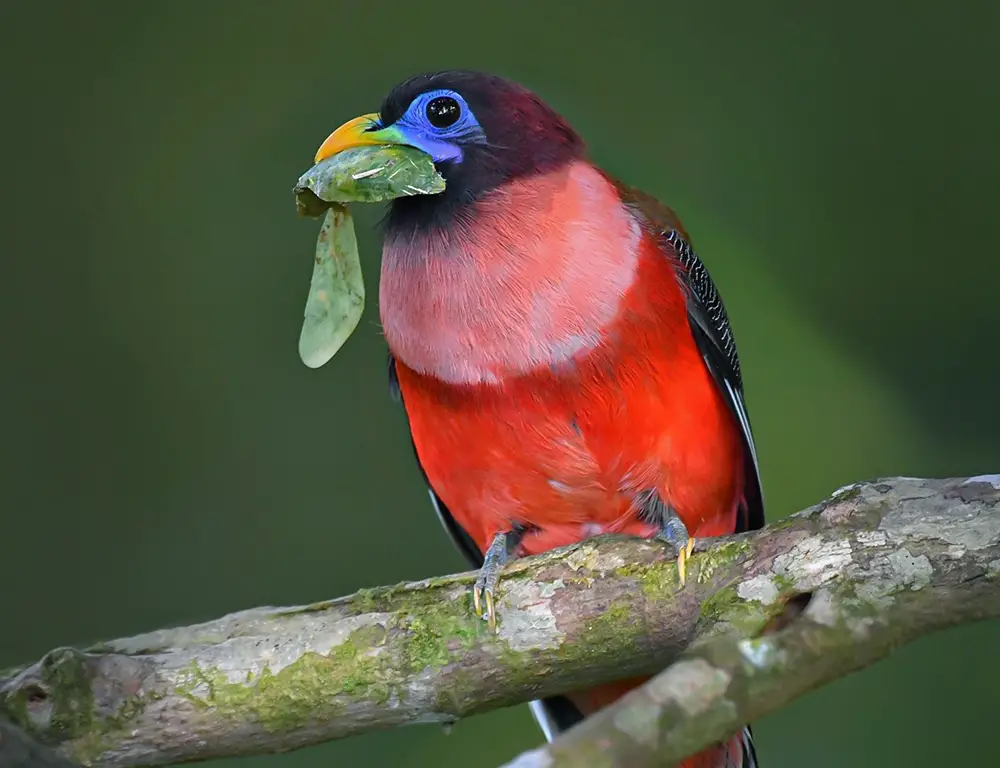
Philippine Trogons are primarily insectivorous, but they also consume small fruits. They employ a sit-and-wait strategy for hunting insects, perching quietly on branches until prey comes within striking distance.
They are known to snatch insects swiftly with their beaks before returning to their perch to consume their catch. When feeding on fruits, they may pluck them directly from trees in mid-flight.
Breeding Behavior
Male Philippine Trogons perform elaborate courtship displays during the breeding season to attract females. These displays may include vocalizations ranging from soft coos to louder croaks and visual displays such as fluffing feathers and fanning their tails.
Once a pair forms, they will work together to select a nesting site and raise their young.
Nesting
Philippine Trogons are cavity nesters, meaning they nest in hollowed-out cavities in trees. Males are responsible for excavating these cavities in decaying trees or utilizing old woodpecker holes.
After the nest is prepared, the female will lay one or two eggs, which both parents will take turns incubating. Once the eggs hatch, both parents care for and feed the chicks until they fledge.
Solitary Nature
Outside of the breeding season, Philippine Trogons are typically solitary birds. They are often encountered alone, quietly perched in the dense foliage of the forest canopy. However, they may form pairs or small groups during the breeding season.
Elusiveness
Philippine Trogons are known for their elusive nature, making them challenging to observe in the wild. They prefer dense forest habitats and are skilled at blending into their surroundings, making them difficult to spot even when present in their habitat.
Conservation Status of Philippine Trogon
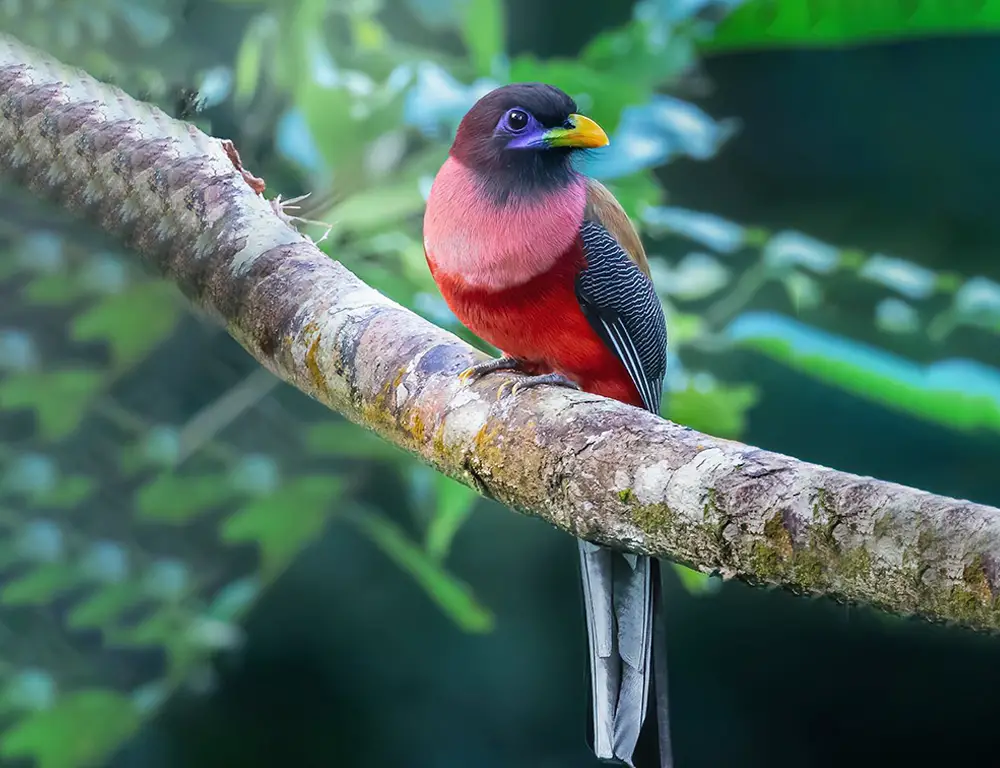
The conservation status of the Philippine Trogon (Harpactes ardens) is indeed a matter of concern, despite its current classification as “Least Concern” by the International Union for Conservation of Nature (IUCN).
While this classification may suggest that the species is not facing immediate threats of extinction, the reality is far from stable.
Threats
- Habitat Loss: The primary threat to the Philippine Trogon is habitat loss, primarily due to deforestation for agriculture and logging activities.
Lowland and montane forests are the bird’s natural habitat and are under constant siege, leading to significant habitat loss and fragmentation. - Hunting: Despite being protected by law in the Philippines, the Philippine Trogon is still subjected to hunting and trapping. Weak enforcement of wildlife protection laws and a need for more resources and awareness exacerbates the issue.
Conservation Efforts
Efforts are underway to address the threats facing the Philippine Trogon and protect its habitat:
- Regulatory Measures: Local government units are implementing stricter regulations on deforestation and illegal logging while promoting sustainable farming practices. These measures aim to conserve existing habitats and restore damaged ones.
- Awareness Campaigns: Various organizations, both locally and internationally, are raising awareness about the plight of the Philippine Trogon through education campaigns in schools and local communities. Increasing public awareness can help garner support for conservation efforts.
- Protection Measures: Specific protection measures, such as breeding programs and monitoring initiatives, are being implemented to ensure the survival of the Philippine Trogon in its natural environment. These efforts aim to mitigate the impact of threats such as habitat loss and climate change.
Conclusion
The Philippine Trogon is a captivating species that contributes significantly to the rich biodiversity of the Philippines. Its vibrant coloring, distinctive call, and unique adaptations highlight its importance in the ecosystem.
While less known globally, this bird serves as a reminder of the beauty hidden in nature and the importance of conservation efforts.
Understanding its habitat preferences and behaviors has been an exciting journey, revealing intricate pieces of the ecological puzzle.
As we continue to study and appreciate creatures like the Philippine Trogon, we deepen our understanding of Earth’s biodiversity.
It’s crucial to safeguard all wildlife, including the Philippine Trogon, to maintain a balanced ecosystem for future generations.
Every discovery adds new chapters to our understanding of Earth’s fantastic life forms, reminding us that every creature has a story worth telling.